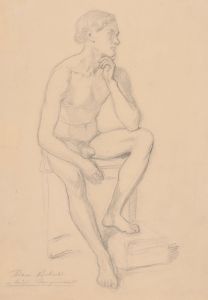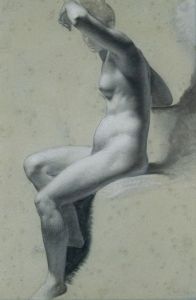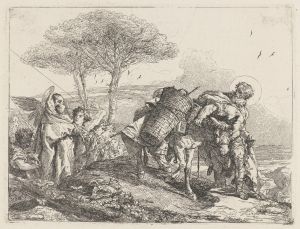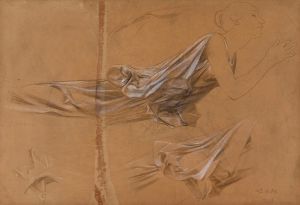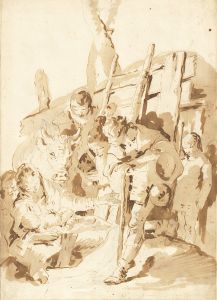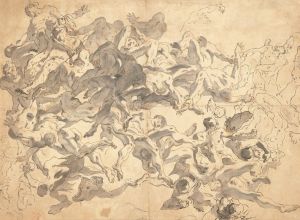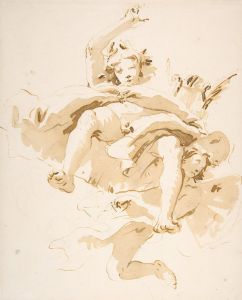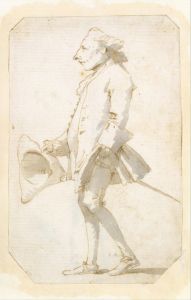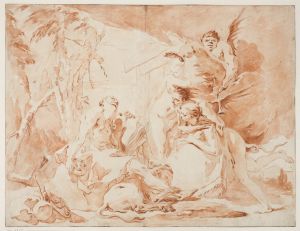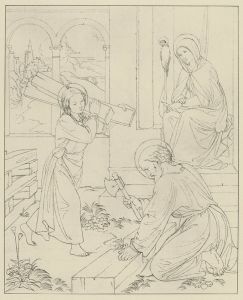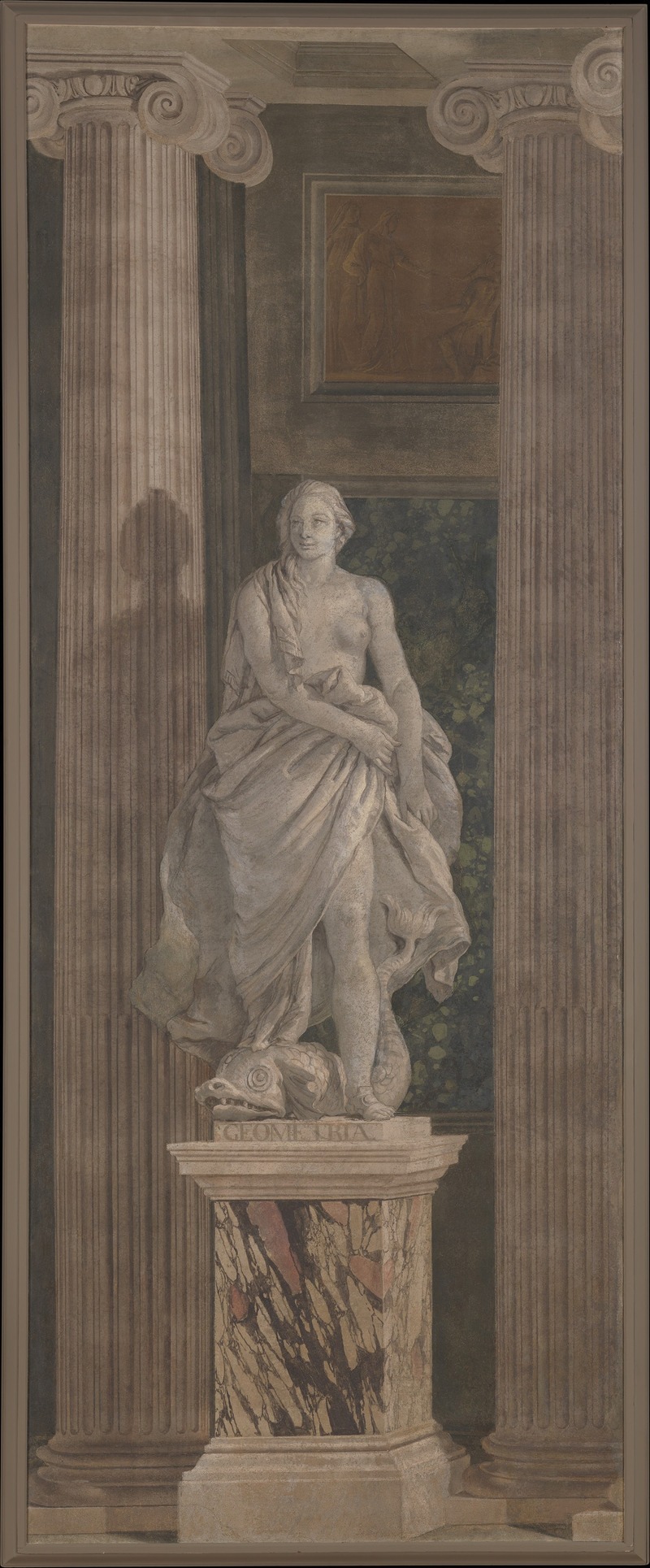
Allegorical Figure Representing Geometry
A hand-painted replica of Giovanni Battista Tiepolo’s masterpiece Allegorical Figure Representing Geometry, meticulously crafted by professional artists to capture the true essence of the original. Each piece is created with museum-quality canvas and rare mineral pigments, carefully painted by experienced artists with delicate brushstrokes and rich, layered colors to perfectly recreate the texture of the original artwork. Unlike machine-printed reproductions, this hand-painted version brings the painting to life, infused with the artist’s emotions and skill in every stroke. Whether for personal collection or home decoration, it instantly elevates the artistic atmosphere of any space.
"Allegorical Figure Representing Geometry" is a painting by the renowned Italian artist Giovanni Battista Tiepolo. Tiepolo, born in Venice in 1696, is celebrated for his grandiose and imaginative frescoes and oil paintings that often depict historical, mythological, and religious subjects. His work is characterized by its vibrant color palette, dynamic compositions, and masterful use of light and shadow.
This particular painting, "Allegorical Figure Representing Geometry," is part of a series of works that Tiepolo created to personify the liberal arts and sciences. The painting is an allegorical representation, a common artistic device in the Baroque period, where abstract concepts are depicted as human figures. In this case, Geometry is personified as a serene and contemplative female figure, embodying the intellectual discipline and precision associated with the field.
The figure of Geometry is typically depicted with attributes that symbolize her domain. In Tiepolo's painting, she is shown holding a compass, an essential tool for geometric measurements and constructions. The compass is a traditional symbol of geometry, representing the precision and exactitude required in the discipline. Additionally, she may be accompanied by other instruments or objects related to geometry, such as a ruler, a globe, or geometric diagrams, although the specific details can vary depending on the version and interpretation of the painting.
Tiepolo's skillful use of light and shadow in this painting enhances the three-dimensionality of the figure and the objects she holds, creating a sense of depth and realism. The artist's delicate brushwork and attention to detail are evident in the rendering of the figure's drapery and facial expression, which convey a sense of calm and intellectual focus.
The painting reflects the Enlightenment ideals of the 18th century, a period that emphasized reason, science, and the pursuit of knowledge. By personifying Geometry, Tiepolo not only celebrates the discipline itself but also the broader intellectual and cultural movement of his time. The allegorical figure serves as a reminder of the importance of geometry in various fields, including art, architecture, and engineering.
Giovanni Battista Tiepolo's "Allegorical Figure Representing Geometry" is a testament to his artistic prowess and his ability to convey complex ideas through visual means. The painting remains an important example of Baroque allegorical art and continues to be appreciated for its beauty and intellectual depth.





